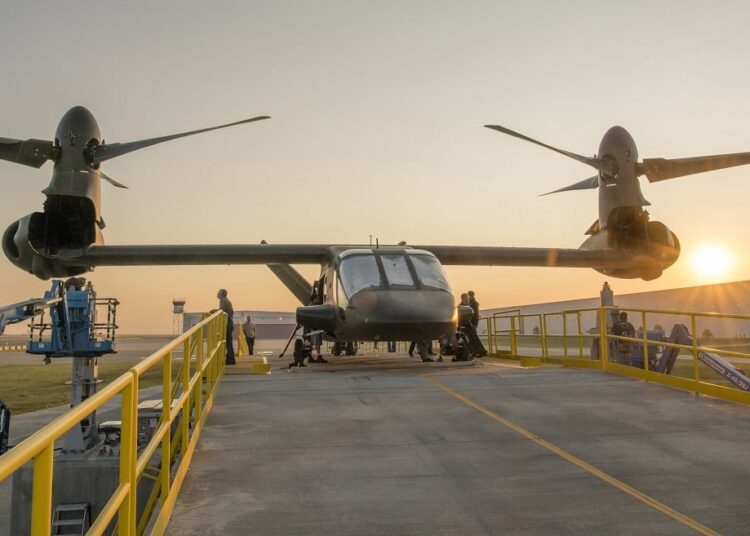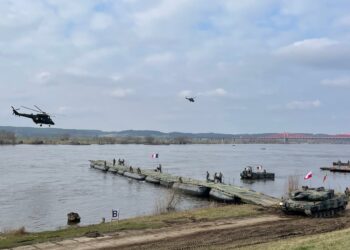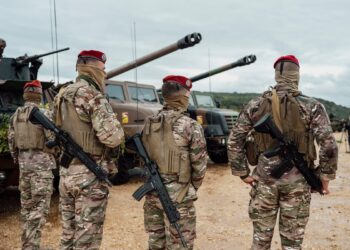**NASHVILLE, Tenn.** − The U.S. Army plans to accelerate the delivery of its first production-representative Future Long-Range Assault Aircraft (FLRAA) to soldiers by the year **2028**. This effort involves transitioning into low-rate production while continuing to test prototypes, as confirmed by Col. **Jeffrey Poquette**, the Army’s FLRAA program manager, during a conversation with **Defense News**.
Army leadership has initiated a transformation initiative focused on expediting the fielding of the FLRAA. While speeding up a significant procurement program carries substantial risks, Army aviation leaders and **Textron’s Bell**—the company awarded the contract to develop the advanced tiltrotor—assert that the program’s unique approach has minimized risks. This is attributed to digital design, engineering, and a technology demonstration effort, during which the **V-280 Valor** tiltrotor has already logged over **200 hours of flight**.
Typically, prototype programs undergo roughly **two years** of testing before production decisions, which Poquette acknowledges. He noted, “Normally you would build prototypes, then you would go to test,” indicating the usual timeline of testing yielding engineering data necessary before moving to production.
“We’re not going to accelerate testing. We’re not going to accelerate design,” Poquette explained, indicating that these phases are already tightly scheduled. However, he highlighted the possibility of beginning aircraft production during ongoing testing efforts with established prototypes.
In **2027**, the Army intends to make an early production decision prior to the Milestone C approval. This timeline is feasible due to an option within the existing contract with Bell allowing for a low-rate production lot.
Past experiences with concurrency—producing systems before finalizing designs—have resulted in delays and failures. Nevertheless, both Bell and the Army express confidence that this situation is different. Poquette relayed that Bell is “very confident” in its digital engineering approach, stating that while outcomes may not be perfect, they would be close.
Ryan Ehinger, Bell’s FLRAA program manager, emphasized their commitment: “It’s a continuation of production from our prototypes into early production representative aircraft.” He highlighted the advancements made since the **Joint Multirole Technology Demonstrator**, alongside ongoing manufacturing developments utilizing advanced technologies.
Additionally, Bell is responsible for manufacturing critical components including the wing, blades, and gearboxes. Ehinger noted that their manufacturing technology center has been iterating on design improvements for several years.
The Army’s strategy includes an ambitious goal of completing full-rate production within **four or five years** instead of the typical **seven or eight**. Poquette reiterated the urgency: “What we’re asking Bell to do is build capacity faster to get to full-rate production.” This acceleration is projected to lead to a battalion being ready **18 months earlier** and two battalions being operational **30 months ahead** of schedule.
While the initial operational test program was originally scheduled for late **FY31**, the Army anticipates the possibility of entering this phase sooner, potentially as early as FY28 or FY29, due to the early assembly of aircraft.
**Jen Judson**, the author, is an award-winning journalist covering land warfare for Defense News. She has previously worked for **Politico** and **Inside Defense** and holds a Master of Science degree in journalism from **Boston University** along with a Bachelor of Arts degree from **Kenyon College**.













